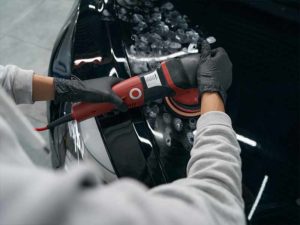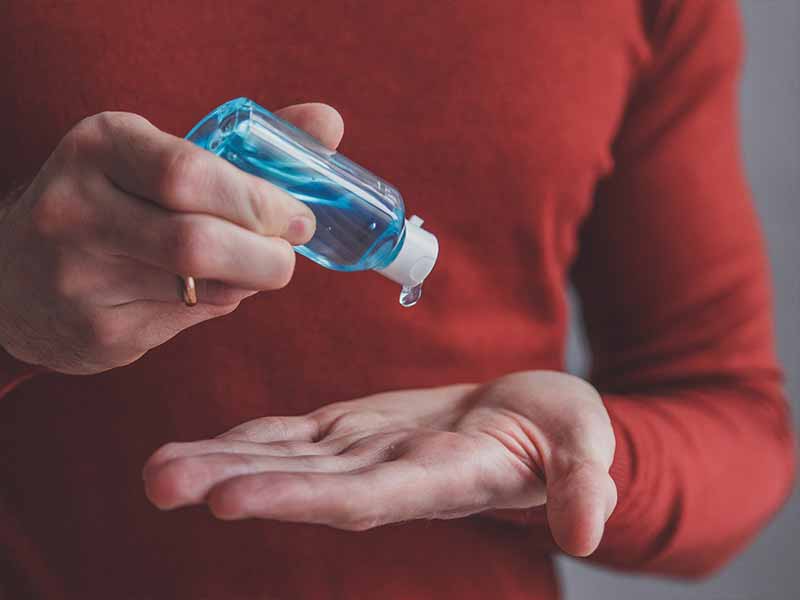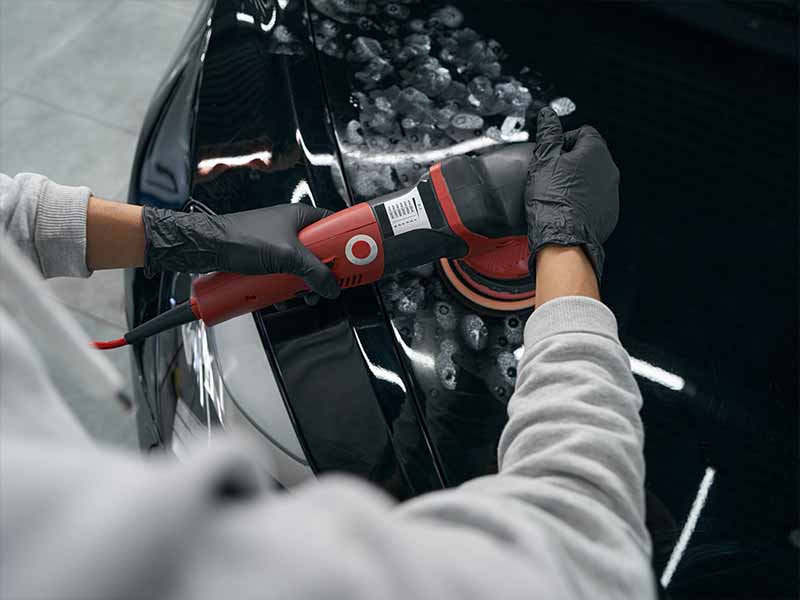Table of Contents
- How Many Coats Of Wax On Car Paint?
- Can You Put Too Much Wax on a Car?
- Can You Put 2 Coats of Wax on a Car or Truck?
- Can You Apply More Than One Coat at Once?
- Can Car Wax Build Up?
- How Often Should You Apply Car Wax?
- How Should You Apply Wax to Your Car?
- How Do You Choose Between Different Waxes?
- Is Sealant Better Than Wax?
- Should You Use Sealant or Wax?
- Do Modern Cars Need to Be Waxed?
- Helpful Links
- Wax Your Car With Confidence
Do you want to preserve your vehicle’s paint? Do you want to protect your car from the elements? Whether you keep your vehicle in a garage or park it on the street, waxing your vehicle provides excellent protection.
If you plan to wax your vehicle, you might wonder how many coats of wax will work best. Not only that, but you might also have questions about what kind of wax you should use, as well as whether you need 5 coats of wax when 2 coats will do.
If you want to know more about how to wax a car and how many coats you need, here’s what you need to know.
How Many Coats Of Wax On Car Paint?
Cars and trucks benefit from 2 coats of wax, whether you use sealants or carnauba waxes, as this will ensure complete coverage. Any more than this is not helpful.
Waxes and paint sealants typically don’t layer well, and you will usually waste time, effort, and product.
Can You Put Too Much Wax on a Car?
Generally speaking, it isn’t possible to apply too much wax. But that doesn’t mean it’s a good idea.
A second coat isn’t too bad of an idea since it will ensure that the paintwork is completely covered. But it isn’t likely that you’ll be adding a layer on top of the previously applied layer of wax.
All that happens with most waxes and paint sealants is you end up smearing around the previously applied wax with the newer wax and wiping off the excess after it dries.

Can You Put 2 Coats of Wax on a Car or Truck?
Again, wax and paint sealants typically don’t layer well, so whether you’re trying to apply 2 coats, 5 coats, or even more, you won’t actually see any benefit to all your extra work and used product.
A second coat will help ensure even coverage and that no spots have been missed, but this is a lot of work for very little return. I highly recommend taking your time on the first coat to ensure all panels have been covered thoroughly.
Can You Apply More Than One Coat at Once?
If you do apply more than one coat of wax, make sure you let the previous coat cure completely before applying a second coat. Curing often requires a few hours.
Instead of paying attention to the number of coats of wax, you should pay attention to your technique. Complete coverage is more important than the number of layers of wax you apply. Ensure that every bit of paint is covered with wax to prevent uneven protection and gloss to your paint job.

Can Car Wax Build Up?
Sometimes when applying too much wax, you can end up with streaks. Streaking depends on the brand and how you wipe it away.
Multiple coats usually won’t streak, but they are generally unnecessary. A second coat is not a bad idea only to ensure you’ve adequately covered the entire surface of your paintwork.
The other concern related to wax building up is whether or not you should remove old wax before applying a fresh coat.
Removing old wax isn’t necessary if you’re applying the same brand of wax. You probably don’t need to bother removing old wax even if you’re not reapplying the same brand but are applying a similar product. It becomes essential to remove old wax when changing the type of product you use to protect your finish. For instance, it would be crucial to remove old wax if you’re planning to apply a ceramic coating or use carnauba wax exclusively and upgrade to a quality synthetic paint sealant.
How Often Should You Apply Car Wax?
In most cases, carnauba waxes last three to eight weeks, while paint sealants typically last 6 months or more. My favorite paint sealant, Wolfgang Deep Gloss Paint Sealant, lasts close to 2 years.
It would be best if you considered adding another coat of wax when you notice that water sits flat on your car’s paint. If water pools rather than beads up, it’s probably time for more wax.
So, how long will your coats of wax last? Several factors play a part. For example, you may need to apply more wax if you store your car outside or live somewhere that is especially rainy. You also need to consider how often you wash your car or truck and what kind of soap you use when you wash. It would be best to look at where you park your vehicle and what environmental factors come into play.
Pay close attention to your vehicle and make sure that you apply another coat of wax before the effects of the last coat wear off. Otherwise, you risk your car not having any of the protection it needs.

How Should You Apply Wax to Your Car?
Washing your car before you apply wax is an essential step in the process. Washing removes dirt and grime you do not want to trap between the wax and the clear coating. Washing also prevents abrasive material from getting caught in the wax.
The first step in applying wax to your vehicle is to apply the wax to a foam applicator. Apply a layer of wax by rubbing the applicator on the paint in a circular motion. When you apply the sealant or wax, make sure that you are not using too much. You need only a thin layer to protect your car.
Additionally, make sure that the applicator you use is clean. Any bit of material left on the applicator can damage the paint job, and substances on the applicator could leave you with unwanted marks in the wax job.
When you apply a coat of wax or sealant, stretch the wax for as long as possible. Whether using liquid wax or paste, you do not want to add so much that it seems to sit on top of the previous layer. Buff it out for the most protection.
After you apply wax, give the coat about 20 minutes to sit. Then, buff out the wax with a microfiber towel. Make sure the towel is clean to prevent damage to your vehicle.
How Do You Choose Between Different Waxes?
You have a lot of choices to make when you wax your car. For example, there are several forms of car wax you might consider using. Some people prefer liquid wax, while others prefer a spray coat of wax. Some people prefer cleaner wax, which can help clear debris from your vehicle as it provides protection.
Some car owners prefer to incorporate different applications for the waxes. For instance, some use a clay bar at this time.
Ultimately, you can experiment with different methods to ensure you like the way your car looks. Ultimately, the type of car wax you choose needs to make you feel good about the way your vehicle looks.

Is Sealant Better Than Wax?
In the distant past, car owners often relied on carnauba wax. If you choose to wax with carnauba, you are using actual wax. It is quite effective at providing excellent hydrophobic properties and incredible shine. It is a perfect choice for your car, but the problem is that it does not last very long.
This fact prompts car owners to turn to other options. If you do not want to wax your car every month, you might look at other waxes.
Today, most people use sealant as wax for car paint. There is a good reason for this. Carnauba wax will wear away much more quickly than sealant. Sealants last much longer than wax. Sealant can last months at a time, providing long-term protection for your vehicle’s appearance.
Should You Use Sealant or Wax?
While some car owners may still use wax to get a superior paint shine, a sealant is just as good in most respects, and it provides much longer protection. However, you can ultimately use either option with little consequence to your car.
Ultimately, each option provides benefits. It would be best to use the waxes or sealants that you find to work best for your vehicle.
Do Modern Cars Need to Be Waxed?
You might wonder if your car even needs a coat of wax. If you want to ensure your clear coat doesn’t begin breaking down and peeling after a few years, you’ll want to keep your finish well protected.
Carnauba wax and sealant both protect vehicles from the elements, including rain and ultraviolet damage. They also both make keeping your vehicle exterior easier to clean.
If you have a new car, you have all the more reason to want to protect it. When you apply wax, you can prevent sap or acidic bug guts from sticking to your paint and causing permanent damage. Wax helps you maintain a clean exterior free of damage.
Of course, a lot has changed about the production of cars over the years. Modern vehicles have many benefits that older cars do not. While the clear coat of paint that cars now offer is better than clear coatings in the past, you should not skimp on car wax. This clear coat still needs some protection.
Older cars need protection too. If you are considering waxing car paint, you may wonder what protection your vehicle needs if it is more than a few years old. Waxing your older car preserves its appearance as much as possible so that your car or truck does not look dull and weathered thanks to poor harmful UV rays or sticky environmental elements.
You can also use a coat of wax to make a car look newer. Even if your vehicle is a decade old, you can bring new life to an old paint job with regular waxing. A large number of cars never show their age because they are cared for properly.
If you want to provide the best protection for your car, you should consider applying wax regularly. For one, wax helps protect your vehicle in bad weather. It also protects from bird droppings, sap, and other intrusive elements. For example, your car could have much more protection from vandalism, like egging, if you have been keeping up with waxing and other maintenance.
Helpful Links
Wax Your Car With Confidence
Whether you choose carnauba waxes or a sealant, you should apply it thoroughly, or you can apply two coats to be safe. Use a thin layer of wax for the best results, and know that you are doing your best to protect your car.









